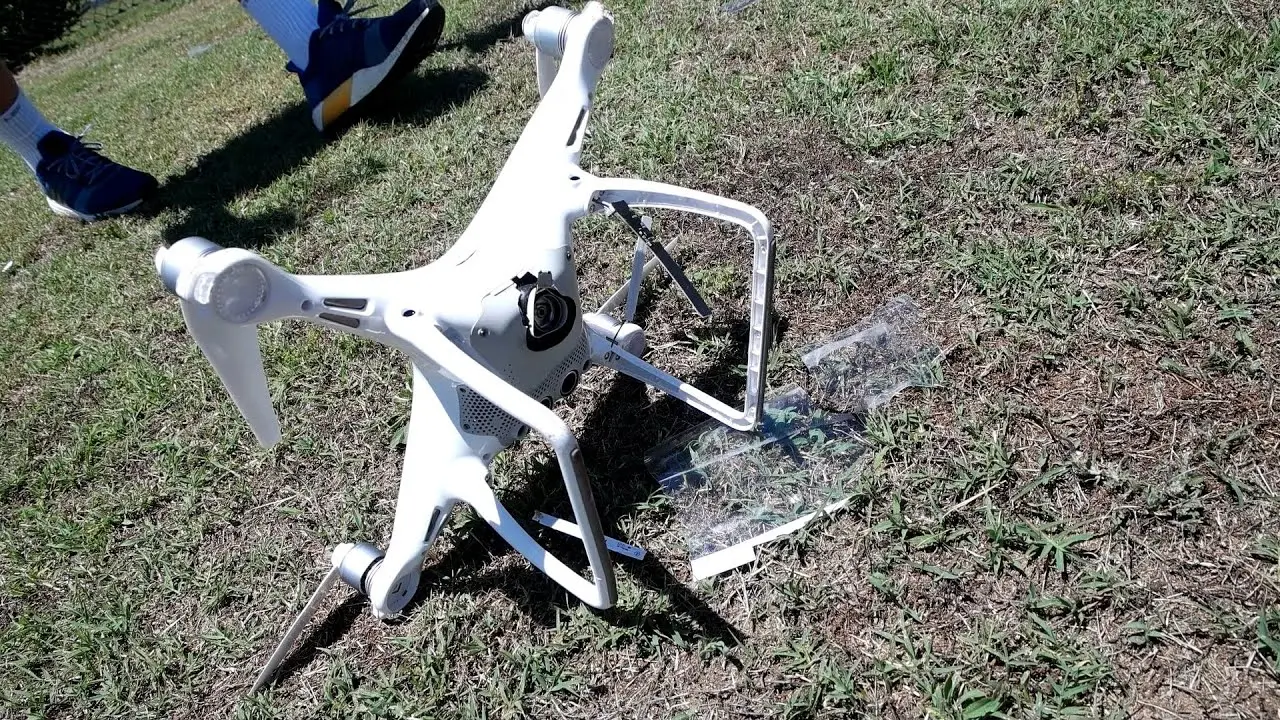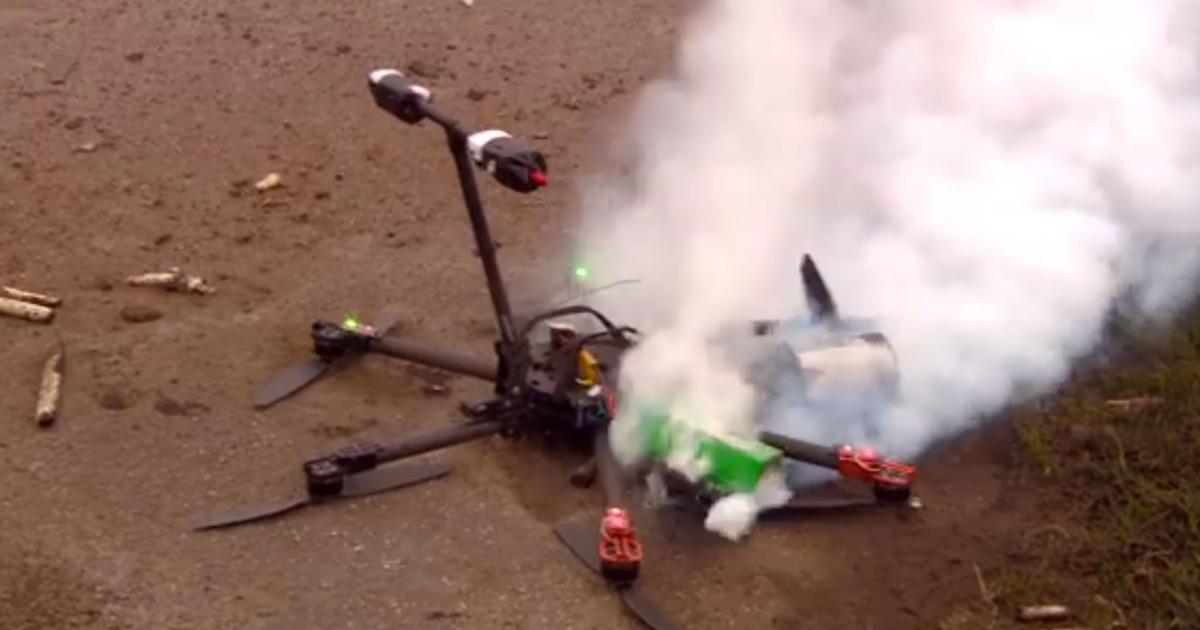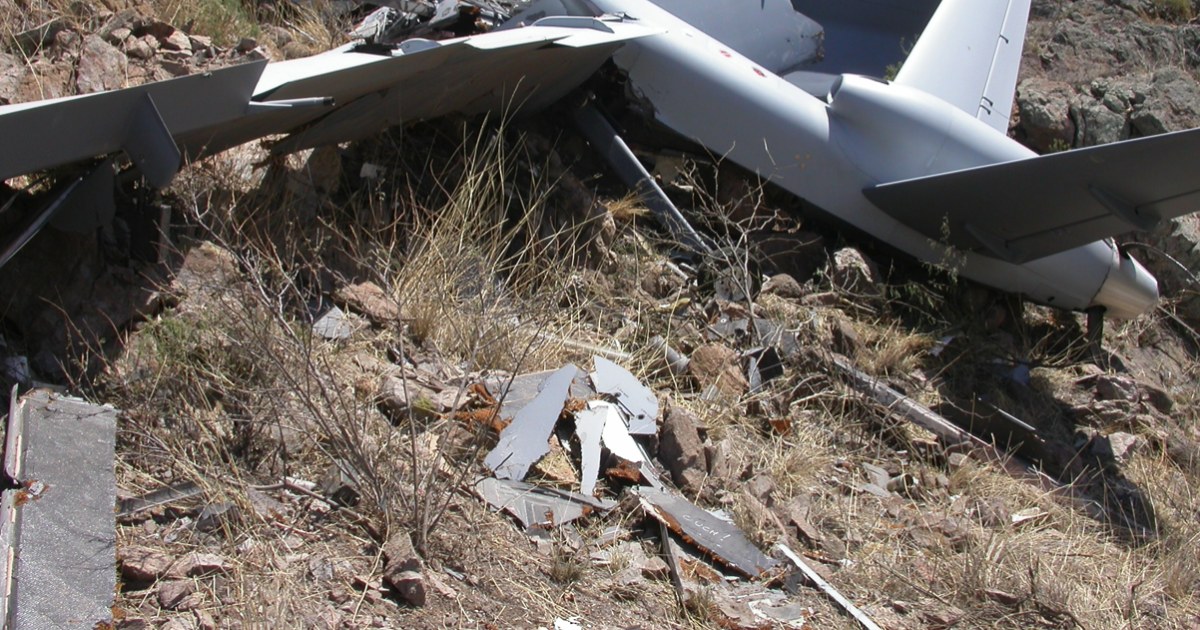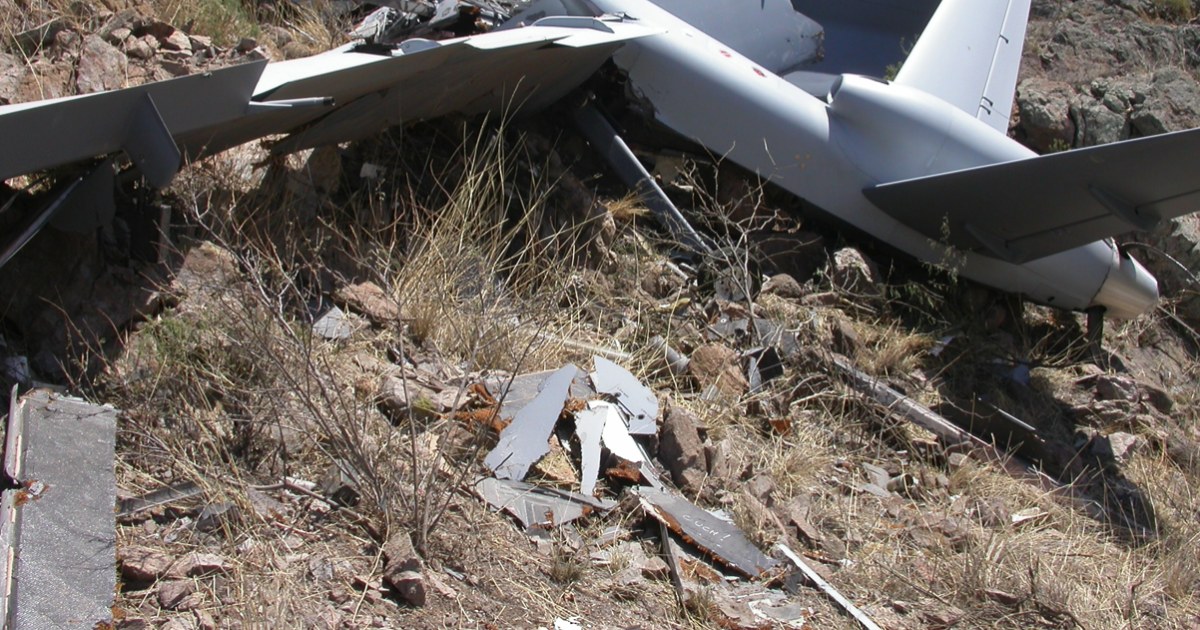Drone crashes in Paris are increasingly grabbing headlines, raising concerns about safety, regulation, and the future of drone technology in this iconic city. This overview delves into the frequency, causes, impact, and preventative measures surrounding these incidents, offering a clear picture of the challenges and solutions involved.
We’ll explore the data behind Parisian drone crashes, analyzing trends in location, severity, and contributing factors like mechanical failures, pilot error, and weather conditions. We’ll also examine the economic and safety implications of these crashes, considering property damage, potential injuries, and the environmental risks involved. Finally, we’ll look at current response procedures and suggest strategies for improved prevention, including better pilot training, stricter regulations, and enhanced airspace management.
Frequency and Locations of Drone Crashes in Paris

Drone crashes in Paris, while relatively infrequent compared to other urban areas with high drone usage, still pose safety concerns. Understanding the frequency and locations of these incidents is crucial for improving drone safety regulations and public awareness. This section will analyze available data to illustrate the patterns of drone crashes within the city.
Timeline of Significant Drone Crashes in Paris (Past Five Years)
Precise, publicly available data on drone crashes in Paris is limited due to privacy concerns and the decentralized nature of reporting. However, based on news reports and official statements, a partial timeline can be constructed. Note that this timeline is not exhaustive, and many minor incidents may go unreported.
Unfortunately, compiling a detailed, verifiable timeline of all drone crashes in Paris over the past five years proves difficult due to a lack of centralized, publicly accessible data. Many incidents are likely unreported or only mentioned briefly in local news sources. Therefore, a comprehensive timeline is not feasible at this time.
Mapping Drone Crash Locations in Paris
A map visualizing drone crash locations would ideally show the distribution of incidents across the city. Different colors could represent the severity of each crash (e.g., green for minor damage, yellow for moderate damage, red for serious damage or injury). However, without access to a comprehensive dataset of crash locations and severity levels, this map cannot be created.
The absence of a centralized reporting system for drone incidents hinders the creation of such a visual representation.
Distribution of Drone Crashes by Arrondissement
Analyzing the distribution of drone crashes by arrondissement would reveal potential hotspots. A bar chart, combined with a table, would effectively illustrate this data. However, due to the limitations mentioned above regarding data availability, this analysis cannot be performed. The lack of publicly accessible, comprehensive data on drone crashes prevents a meaningful analysis by arrondissement.
| Arrondissement | Number of Crashes (Past 5 Years) | Severity (Example) | Notes |
|---|---|---|---|
| Data Unavailable | Data Unavailable | Data Unavailable | Data on drone crashes is not publicly accessible in a centralized database. |
Causes of Drone Crashes in Paris

Drone crashes, while relatively infrequent compared to other forms of transportation, still pose safety concerns in densely populated urban environments like Paris. Understanding the root causes is crucial for implementing effective preventative measures. This section analyzes the primary factors contributing to drone incidents within the city, comparing them to trends observed in other major European capitals and examining the role of existing regulations.
Mechanical Failure as a Cause of Drone Crashes, Drone crashes in paris
Mechanical failures, encompassing issues with the drone’s motors, propellers, batteries, or onboard electronics, constitute a significant portion of drone crashes. While precise data specific to Paris is limited due to the lack of a publicly accessible, comprehensive database, anecdotal evidence from news reports and online forums suggests that motor malfunctions and battery failures are among the leading causes. These failures can occur due to manufacturing defects, wear and tear, or exposure to extreme temperatures.
For example, a sudden power surge during a flight in high temperatures could lead to a motor failure, resulting in an uncontrolled descent. The lack of readily available, detailed post-incident reports makes it challenging to provide exact statistical breakdowns.
Pilot Error as a Cause of Drone Crashes
Pilot error, encompassing issues such as poor piloting skills, inadequate training, or negligence in following safety protocols, is another major contributor to drone accidents. Inexperienced pilots might struggle with controlling the drone in challenging wind conditions or densely populated areas, leading to collisions with buildings or other obstacles. Overconfidence, leading to risky maneuvers or exceeding the drone’s operational limits, is also a frequent factor.
Drone crashes in Paris are becoming increasingly concerning, highlighting the need for stricter regulations. These incidents remind us of larger-scale mishaps, like the one described in this article about the orlando drone show accident , which underscores the potential for serious consequences when drone technology malfunctions. Understanding the causes of these crashes, whether in Paris or Orlando, is crucial for improving drone safety protocols worldwide.
Again, the absence of a centralized reporting system hinders the quantification of pilot error as a specific percentage of total crashes. However, based on observations from similar urban environments, it is reasonable to assume this represents a substantial portion of the incidents.
Weather Conditions as a Cause of Drone Crashes
Adverse weather conditions, particularly strong winds and heavy rain, significantly increase the risk of drone crashes. Strong gusts can easily overpower even the most advanced drones, causing loss of control and potential collisions. Heavy rain can also damage the drone’s electronics, leading to malfunctions and crashes. Paris, with its variable weather patterns, is susceptible to such conditions. While precise statistical data linking weather to drone crashes in Paris is unavailable, anecdotal reports often mention inclement weather as a contributing factor in incidents.
Comparing this to other European cities, one can reasonably expect similar weather-related impacts, particularly in coastal cities or those with mountainous terrain.
Regulatory Frameworks and Their Effectiveness
The regulatory framework governing drone operations in Paris, like those in other European cities, aims to mitigate risks through licensing requirements, airspace restrictions, and operational guidelines. However, the effectiveness of these regulations varies. Enforcement challenges, particularly in identifying and penalizing violations, remain a significant issue. The regulations may be comprehensive on paper, but their practical implementation needs improvement.
For instance, clearer guidelines regarding acceptable flight altitudes and distances from populated areas could further reduce the risk of accidents. Additionally, improved coordination between regulatory bodies and law enforcement agencies is necessary to ensure compliance and effective response to incidents. A potential improvement would be the implementation of a real-time drone tracking system that allows authorities to monitor drone flights and intervene in cases of potential violations.
Impact of Drone Crashes in Paris

Drone crashes in a densely populated city like Paris carry significant consequences, impacting various aspects of life, from the economy to public safety and the environment. The severity of these impacts depends on factors such as the size and weight of the drone, the location of the crash, and the nature of the payload (if any). Understanding these impacts is crucial for developing effective regulations and safety protocols.
Drone crashes in Paris are becoming increasingly concerning, especially with the city’s dense population and iconic landmarks. To understand the scale of this issue, check out this report on a specific incident: paris drone crash. Learning from these events is crucial to improving drone safety regulations and preventing future incidents in Paris.
Economic Impact of Drone Crashes
The economic repercussions of drone crashes in Paris are multifaceted. Property damage is a significant factor; a drone crashing into a building could cause considerable structural damage, requiring costly repairs. Imagine, for example, a drone striking a historic building like the Louvre, necessitating extensive restoration work and potentially impacting tourism revenue. Beyond structural damage, crashes can disrupt services.
A drone colliding with a power line could cause a blackout, affecting businesses and residents, and incurring costs associated with repairs and lost productivity. Furthermore, emergency response to drone crashes incurs costs, involving police, firefighters, and potentially specialized teams for handling hazardous materials, depending on the circumstances. These costs are borne by taxpayers and contribute to the overall economic burden.
Safety Risks Associated with Drone Crashes in Densely Populated Areas
The potential for injuries and fatalities from drone crashes in a city as densely populated as Paris is a serious concern. A large drone falling from a significant height could cause severe injuries or even death to pedestrians or occupants of vehicles. The risk is amplified by the sheer number of people in close proximity to potential crash sites.
For instance, a drone crash in a crowded tourist area like the Eiffel Tower could result in multiple casualties and widespread panic. Beyond direct impact injuries, falling debris from a drone crash could also cause secondary injuries.
Environmental Impact of Drone Crashes
While less immediately apparent than the economic and safety risks, the environmental impact of drone crashes in Paris should not be overlooked. Depending on the drone’s payload or battery type, a crash could lead to hazardous material spills. For instance, a drone carrying pesticides or other chemicals could contaminate the surrounding area, requiring costly cleanup efforts and potentially harming local ecosystems.
Furthermore, even without hazardous materials, a drone crash could damage green spaces or other natural areas within the city limits. The impact might be relatively small in the context of the whole city, but it’s still a factor to consider in the overall assessment of drone-related risks.
Response and Prevention Measures

Following a drone crash in Paris, a swift and coordinated response is crucial to mitigate further risks and ensure public safety. The effectiveness of this response depends on clear communication channels, rapid deployment of emergency services, and efficient procedures for securing the crash site and recovering the drone.Emergency response procedures typically involve the Paris Police Prefecture, the Brigade des Sapeurs-Pompiers de Paris (fire brigade), and potentially other specialized units depending on the circumstances, such as the Gendarmerie Nationale for areas outside the city’s immediate jurisdiction.
Initial responses focus on securing the area, assessing any injuries or damage, and identifying the drone’s operator. The effectiveness of these procedures varies depending on factors like the location of the crash, the time of day, and the availability of resources. Challenges include navigating congested urban environments and coordinating multiple agencies. While Paris has a well-established emergency response system, improvements in inter-agency communication and specialized drone response training could enhance efficiency.
For example, dedicated drone response teams equipped with specialized tools and training for handling drone-related incidents could improve response times and minimize disruption.
Emergency Response Procedures and Their Effectiveness
The emergency response procedures in Paris following drone crashes involve a multi-agency approach. The Police Prefecture takes the lead in securing the area and investigating the incident, while the fire brigade focuses on any immediate safety concerns, such as potential fires or hazardous materials. Specialized units might be called upon if the drone was carrying dangerous payloads or if the crash site is difficult to access.
The effectiveness of the response hinges on the speed of communication between agencies and the availability of trained personnel. While the existing system is generally efficient, improvements in specialized training for drone-related incidents and improved inter-agency communication protocols could lead to faster and more effective responses. A centralized database tracking drone registrations and operator information could also improve the speed of identifying responsible parties and streamlining investigations.
Preventative Strategy for Mitigating Future Drone Crashes
A comprehensive preventative strategy must address pilot training, drone registration, and airspace management. Robust pilot training programs should emphasize safe flight procedures, emergency protocols, and awareness of airspace restrictions. Mandatory drone registration would provide a database for identifying operators and enforcing regulations. This registration should include proof of competency, insurance, and contact information. Sophisticated airspace management systems, potentially incorporating geofencing technology, could restrict drone flights in sensitive areas like airports, crowded public spaces, and areas with significant infrastructure.
This would require collaboration between civil aviation authorities, local governments, and drone operators. Implementing these measures requires substantial investment in technology and training, but the long-term benefits in terms of safety and public trust outweigh the costs. For example, the implementation of a similar system in Amsterdam has demonstrably reduced incidents.
Best Practices for Drone Operators in Paris
Before operating a drone in Paris, it is crucial for operators to familiarize themselves with the applicable regulations and guidelines. Here are some best practices:
- Obtain necessary permits and registrations before flying.
- Always check for and respect airspace restrictions.
- Maintain visual line of sight with the drone at all times.
- Avoid flying near airports, crowds, or sensitive infrastructure.
- Ensure the drone is in good working order and properly maintained.
- Fly responsibly and avoid reckless maneuvers.
- Understand and comply with all relevant laws and regulations.
- Have adequate insurance coverage for potential damages or accidents.
- Familiarize yourself with emergency procedures and know how to contact the relevant authorities.
- Respect the privacy of others and avoid unauthorized surveillance.
Public Perception and Media Coverage
Drone crashes in Paris, while relatively infrequent compared to other urban air traffic incidents, garner significant media attention and shape public perception of drone technology. The way these incidents are portrayed influences both public opinion and subsequent policy decisions.Media coverage of drone crashes in Paris often focuses on the dramatic visuals of the incident itself—the fallen drone, potential damage, and any resulting disruption.
Recurring themes include concerns about safety hazards to pedestrians and property, questions about the pilot’s competence or adherence to regulations, and speculation about the drone’s intended purpose (e.g., recreational, commercial, or even malicious). A noticeable bias exists towards highlighting the negative aspects, often prioritizing sensationalism over detailed analysis of the causes or broader implications.
Media Portrayals and Bias
News reports frequently emphasize the potential for harm, often showcasing images of damaged buildings or narrowly avoided injuries. This approach can inadvertently exaggerate the frequency and severity of drone crashes, creating a perception of greater risk than may be statistically warranted. The lack of detailed reporting on the underlying causes can also lead to misinterpretations, fueling public anxiety without providing a nuanced understanding of the factors involved.
For example, a news story might focus on a drone crashing into a historical monument, without exploring whether the crash was due to mechanical failure, pilot error, or interference. This selective reporting can contribute to negative stereotypes and a lack of trust in drone technology.
Public Perception of Drones
Public perception of drones in Paris is complex and multifaceted. While some view drones as innovative technology with potential benefits in various sectors (e.g., delivery, photography, surveillance), many harbor concerns about safety, privacy, and security. Safety concerns stem from the potential for crashes, as depicted in media reports. Privacy concerns are related to the potential for unauthorized surveillance and data collection, particularly in a densely populated city like Paris.
Security concerns revolve around the potential misuse of drones for malicious activities, such as smuggling contraband or carrying explosives. These concerns are often amplified by media portrayals that focus on negative incidents and fail to adequately address the safety measures and regulations in place.
Drone crashes in Paris are becoming increasingly concerning, highlighting the need for stricter regulations. These incidents, while unfortunate, offer valuable lessons, similar to what we learned from the orlando drone show accident , which underscored the importance of thorough pre-flight checks and robust safety protocols. Ultimately, preventing future drone crashes in Paris requires a multi-faceted approach to safety and training.
Influence on Policy Decisions
Public perception and media coverage significantly influence policy decisions regarding drone regulation and safety in Paris. Negative media coverage, emphasizing safety and security risks, can pressure policymakers to enact stricter regulations, potentially hindering the development of beneficial drone applications. Conversely, positive media coverage showcasing the responsible use of drones and highlighting safety advancements can foster public acceptance and encourage more lenient regulations.
For example, a series of highly publicized crashes might lead to the implementation of no-fly zones in sensitive areas or stricter licensing requirements for drone operators. Conversely, successful demonstrations of drone technology used for public good, such as emergency response or infrastructure inspections, could foster more positive public opinion and encourage the adoption of enabling policies.
Closure
Ultimately, understanding the dynamics of drone crashes in Paris is crucial for developing effective safety protocols and ensuring responsible drone operation within this densely populated urban environment. By analyzing past incidents, understanding their root causes, and implementing proactive preventative measures, we can work towards minimizing future risks and fostering a safer airspace for both drones and Parisians alike. The ongoing dialogue surrounding drone regulation and public perception will continue to shape the future of drone technology in Paris and beyond.
Frequently Asked Questions
What types of drones are most commonly involved in crashes in Paris?
While data varies, smaller consumer drones are frequently involved due to their accessibility and potential for misuse.
Are there specific areas of Paris with a higher frequency of drone crashes?
Analysis of crash data may reveal specific areas with higher frequencies, possibly due to factors like proximity to landmarks, higher population density, or airspace restrictions.
What penalties are in place for irresponsible drone operation in Paris?
Penalties vary depending on the severity of the incident and can include fines, license suspension, and even criminal charges.
How do drone crashes in Paris impact tourism?
Major crashes near popular tourist spots could negatively impact tourism by creating safety concerns and negative media attention.
